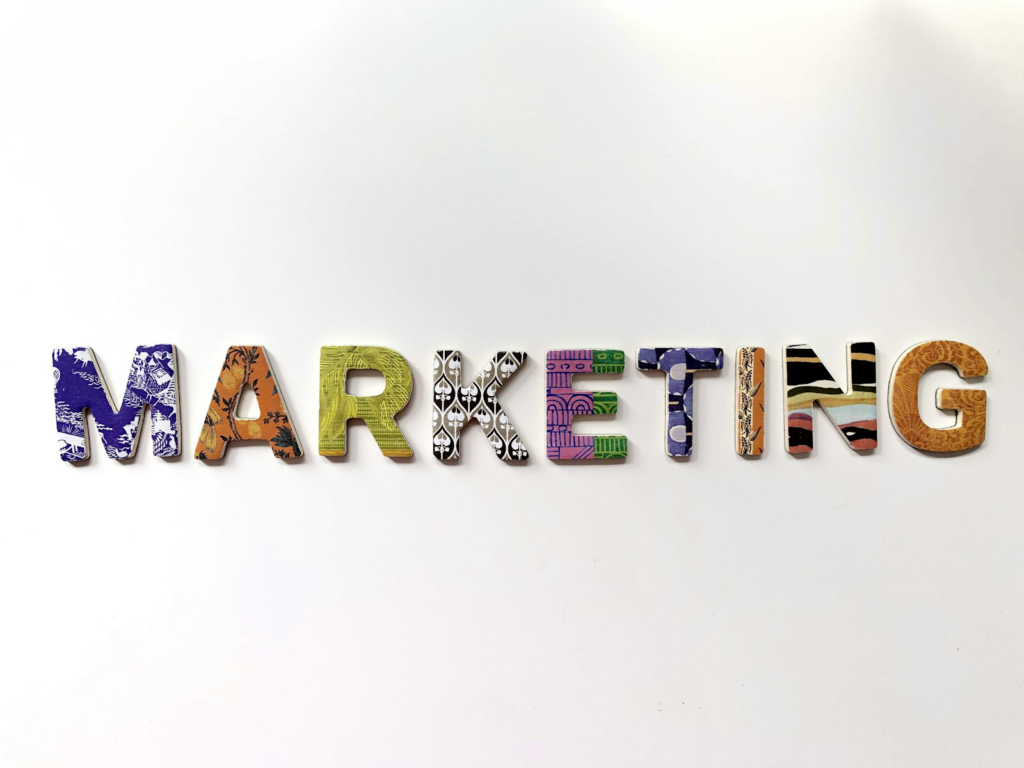
Key Takeaways
- Organic search still drives the bulk of B2B SaaS discovery-studies show 60-63% of SaaS website traffic comes from organic search-but organic leads are down ~47% in 2025, so you can't bet on SEO alone anymore.
- The strongest B2B SaaS teams connect SEO and outbound: they use search data (keywords, top pages, intent signals) to drive hyper-targeted lists, cold email angles, and call scripts for their SDRs.
- SEO-generated leads in SaaS convert around 14.6% compared with just 1.7% for traditional outbound alone, so aligning SDR outreach to high-intent organic traffic dramatically improves close rates.
- Cold outbound benchmarks in 2025 show average reply rates around 3-5%, while top performers hit 8-12%+ by combining precise ICP targeting, deep personalization, and multi-touch sequences tied to buyer intent.
- AI and personalization aren't optional anymore-outbound teams using AI-powered workflows report roughly 29% higher productivity and 24% more engagement, especially when they personalize based on what prospects are researching.
- Most B2B SaaS buyers will read multiple pieces of content and reviews before they ever talk to sales, so your SEO content, review presence, and outbound messaging need to tell one consistent, credible story.
- Bottom line: unlock B2B SaaS marketing by making SEO the engine that creates demand and SalesHive-style outbound the gearbox that converts that demand into booked meetings and pipeline.
The B2B SaaS playbook changed—your pipeline model has to change too
B2B SaaS marketing used to feel linear: rank on Google, publish content, capture leads, and let SDRs follow up. In 2025, that sequence breaks because buyer behavior is still search-led, but the number of organic leads you can reliably count on has fallen. The teams winning now don’t “pick a channel”—they build a single system where SEO creates intent and outbound converts it into meetings.
Organic search remains the biggest driver of SaaS discovery, with roughly 63% of SaaS website traffic coming from organic search. At the same time, analysis across B2B companies shows a 47% drop in organic leads from January to October 2025, which is the exact definition of “visibility without predictable pipeline.” That’s why an SEO-only motion is now a risk, not a strategy.
Outbound hasn’t gotten easier, either—your prospects’ inboxes are crowded, and generic sequences get filtered out fast. Benchmarks still show average cold email open rates around 27.7% with reply rates near 5.1%, and many programs sit closer to 1–3% responses unless targeting and messaging are tight. The fix is to connect search intent to an SDR motion that feels relevant, timely, and consistent with what prospects already read.
Why search still decides who makes the shortlist
Even with AI overviews and “zero-click” behavior, buyers still start their evaluation online and form opinions before they ever talk to sales. Around 60%+ of B2B decision-makers read at least three pieces of vendor content before speaking with sales, which means your content is effectively your first sales call. If your outbound message doesn’t match what they learned in search, it feels like a bait-and-switch.
Search also drives the best-quality demand: SEO-generated leads in SaaS close at about 14.6%, compared with just 1.7% for traditional outbound alone. That doesn’t mean you stop outbound; it means your outbound should ride on top of proven intent, not try to manufacture interest from nothing. When we align cold email agency workflows and calling sequences to what prospects are already researching, outreach becomes a continuation of their journey instead of an interruption.
For most B2B teams, organic search generates about 53% of inbound leads, so marketing is already feeding the funnel—just not in a way sales can consistently monetize. The goal is to turn “traffic and rankings” into a revenue asset your SDRs can act on daily. That’s where a connected operating model matters more than any single tactic.
Build a search-first foundation that your SDRs can actually sell
The fastest way to waste SEO investment is chasing high-volume keywords that never become conversations. Instead, we recommend building around high-intent queries tied to buying decisions: pricing, comparisons, integrations, security, implementation timelines, and “alternative to” searches. These topics naturally map to SDR openers, AE follow-ups, and procurement objections, so content becomes a sales tool—not a blog archive.
Your ICP language should come from real calls, not internal product taxonomy. When SDRs hear “we’re stuck in onboarding chaos” or “RevOps can’t trust the CRM data,” those phrases become the seeds for pages that rank and convert. The payoff is practical: every article and landing page should give SDRs a reason to reach out that sounds helpful, not salesy.
Content also needs to be consistent with how your market evaluates risk, especially in SaaS where credibility is everything. If prospects search your brand name plus “reviews” right after reading a comparison page, the story they find should reinforce the same proof points your SDRs share on calls. Done right, content, reviews, and outbound all tell one coherent narrative that makes the next step feel obvious.
Operationalize SEO-to-outbound handoffs with intent signals and account plays
Treating SEO and outbound as competing channels is a common mistake that quietly kills pipeline. When marketing optimizes for pageviews and sales optimizes for dials, you get content nobody uses and outreach nobody trusts. The fix is a shared funnel where SEO topics, landing pages, and outbound sequences are planned together around the same ICP, pains, and proof.
The handoff should be concrete: which pages indicate buying intent, what actions trigger outreach, and what message the SDR should lead with based on the asset. A pricing page visit, a repeat visit to a comparison page, or time spent on an integration guide should determine the angle, the objection you preempt, and the call-to-action. This is how a b2b sales agency or sdr agency turns “interest” into a booked meeting without spamming.
List quality matters just as much as timing, and “spray-and-pray” off a dirty list is still the fastest way to burn your domain and your brand. Across large datasets, typical response rates sit at 1–3%, while the top performers hit 8–12% by using tight segmentation and sharp messaging. That’s why we treat list building services and b2b list building services as a strategic capability, not a one-time CSV purchase.
When SEO, content, and SDR outreach tell the same story, your prospects feel like they’re being guided—not chased.
Execute outbound that feels inevitable: email plus calling that matches intent
Once intent is clear, outbound should be multi-touch and multi-channel, not “email only” or “calls only.” A strong outbound sales agency motion pairs a relevant email with a follow-up call that references the same use case and proof, so the buyer experiences consistency across touchpoints. This is where cold calling services still shine: a timely conversation can clarify fit in minutes when your message is anchored to what they already care about.
Benchmarks help you manage expectations and improve execution, but they only matter if you compare them to the right standard. Here’s a simple view of the numbers leaders should watch when building an outsourced sales team or sales outsourcing program, especially when tying outreach to intent-driven assets.
| Metric | What “typical” looks like | What “strong” looks like with intent + targeting |
|---|---|---|
| Cold email open rate | 27.7% | Improves with tighter ICP, better deliverability, and relevance |
| Cold email reply rate | 5.1% | 8–12% for top campaigns with strong targeting |
| SaaS close rate | 1.7% (traditional outbound alone) | 14.6% (SEO-led intent) |
In practice, the best “cold” outreach rarely feels cold because the SDR is calling into active problems, not abstract personas. That’s why cold calling companies and cold email agency programs perform best when they’re tied to specific pages, topics, and pains—pricing, integrations, migrations, and competitive alternatives. If you need a repeatable motion, pay per meeting lead generation only works long-term when the underlying targeting and message quality stay disciplined.
Common mistakes that drag down meetings—and the fixes that compound
Mistake one is treating SEO and outbound like separate teams with separate goals. The symptoms are predictable: marketing celebrates traffic, sales complains about lead quality, and nobody owns the narrative the buyer sees from Google to the inbox to the call. The fix is a shared planning cadence where content briefs, landing pages, and SDR sequences are built from the same ICP map and objection list.
Mistake two is optimizing for volume over intent—ranking for broad terms that look impressive but don’t translate to pipeline. Generic category traffic often creates busywork for SDRs and makes your conversion rate look “mysteriously” low. The fix is to prioritize decision-stage assets and build outbound plays that mirror them, so b2b cold calling services and email sequences have a clear reason to exist.
Mistake three is underusing proof, especially reviews and customer outcomes, in both content and outreach. Buyers want evidence fast, and if your pages and emails don’t surface credible proof, they assume risk and slow down. The fix is to keep proof current and deploy it everywhere: on high-intent pages, in follow-ups, and inside call talk tracks so your cold callers sound like consultants, not pitch machines.
Use AI to scale relevance, not to automate your humanity away
Automation is a lever, not a strategy, and over-automated outreach is now easy to spot. Prospects can tell when an email was stitched together without context, and that’s when replies become low-quality—even if send volume goes up. The right approach is to use AI to support research, segmentation, and personalization, while keeping humans in control of positioning, sequencing, and calls.
The upside is real: outbound teams using AI-powered tools report roughly 29% higher productivity and 24% more engagement when AI helps tailor outreach to the buyer’s situation. That kind of lift matters most when your AI is fed the right inputs—ICP rules, intent signals, and content themes that match what buyers are searching. In other words, AI performs best when your SEO and content strategy are already clear.
At SalesHive, our model sits at that intersection: we combine elite SDR execution with a proprietary AI sales platform so personalization stays accurate at scale. Whether a team needs a cold calling agency, an outbound sales agency, or full sales development agency coverage, we focus on making outreach feel handcrafted even when it’s systematized. That’s the difference between “more activity” and “more meetings.”
Next steps: build one revenue system and measure what actually moves pipeline
The path forward is a connected operating cadence: marketing and SDR leadership align weekly on what’s ranking, what’s converting, and what accounts are showing intent. From there, you translate insights into action—new content briefs, refreshed sequences, updated call scripts, and tighter segmentation. When this loop is consistent, your website becomes the demand engine and outbound becomes the gearbox that converts it into pipeline.
To keep execution grounded, measure a small set of metrics that reflect reality: meetings booked by intent segment, reply and connect rates by ICP slice, and pipeline created per play. If you’re evaluating sales outsourcing or deciding whether to hire SDRs versus partnering with a sales agency, insist on reporting that ties activity to outcomes—not vanity metrics. The goal is predictable meetings, not just “more touches.”
If you’ve invested in SEO but your calendar isn’t reflecting it, don’t assume the answer is “publish more.” The answer is usually better alignment: tighter intent-driven content, better list building, and outreach that mirrors what buyers already learned in search. When your SEO narrative, reviews presence, and SDR motion reinforce each other, your pipeline stops being a guess and starts becoming a system.
Sources
- SEO Sandwitch – SaaS B2B Inbound Marketing Statistics
- Omniscient Digital – B2B SEO Statistics
- Neil Patel – B2B Organic Leads Down 47% in 2025
- Optif.ai – 2025 Cold Email Benchmarks
- Built for B2B – B2B Cold Email Benchmarks 2025
- NukeSend – B2B Cold Outreach Trends 2025
- SEO Sandwitch – B2B SEO Statistics
📊 Key Statistics
Common Mistakes to Avoid
Treating SEO and outbound as separate, competing channels
When marketing optimizes only for traffic and sales only for dials, you end up with content nobody reads and outreach nobody wants to respond to. Pipeline suffers because the message your prospects see in search doesn't match what they hear from SDRs.
Instead: Build a shared funnel where SEO topics, landing pages, and outbound sequences are planned together. Use the same ICP, pain points, and proof points across content, email, and call scripts so each channel reinforces the other.
Chasing high-volume keywords that never turn into meetings
Ranking for generic category terms may look great on a dashboard but often pulls in unqualified traffic that never converts, wasting SDR time on weak leads.
Instead: Prioritize high-intent, lower-volume queries tied to buying decisions-pricing, comparisons, integrations, and jobs-to-be-done. Then build specific outbound plays for visitors and accounts engaging with those assets.
Running spray-and-pray outbound off a dirty, unsegmented list
Blasting thousands of SaaS contacts with the same message delivers the 1-3% reply rates you see in industry averages, burns domains, and damages brand trust.
Instead: Invest heavily in list building and segmentation based on firmographics, tech stack, funding stage, and behaviors like content consumption. Smaller, tighter campaigns informed by search behavior usually outperform big blasts by 2-3x on reply rate.
Underusing reviews and social proof in both SEO content and outreach
B2B SaaS buyers heavily rely on peer reviews and recent, verified feedback; if you don't bring that proof into your pages and emails, you look like unproven risk.
Instead: Actively collect and surface fresh, third-party reviews on your site and in nurture content. Equip SDRs with review snippets, ratings, and customer quotes that map to each persona and use case.
Automating everything and losing the human edge
Over-automated sequences and AI-written emails that ignore context blend into the noise and tank reply quality, even if they boost send volume.
Instead: Use automation and AI to handle research, personalization snippets, and workflow-but keep humans in control of strategy, messaging, and call execution. Outbound should feel handcrafted, even if it's AI-assisted.
Partner with SalesHive
For B2B SaaS teams, SalesHive’s services map directly onto the strategy in this guide. Their list-building capabilities ensure your SDRs are always targeting the right accounts and personas, not just generic "SaaS execs." Their email outreach program uses AI-powered personalization (via tools like their eMod engine) to reference each prospect’s role, tech stack, and relevant content topics-boosting reply and meeting rates without sacrificing sender reputation. On the phone side, US-based and Philippines-based cold callers run structured, consultative conversations that echo the pains and use cases already highlighted in your SEO content.
Layer in full SDR outsourcing and appointment setting, and you get an end-to-end outbound machine that plugs cleanly into your CRM, mirrors your brand voice, and reports on the metrics that matter: meetings booked, pipeline created, and revenue influenced. If you’ve invested in B2B SaaS SEO but your sales calendar isn’t reflecting it yet, SalesHive can be the missing link between traffic and closed deals.






